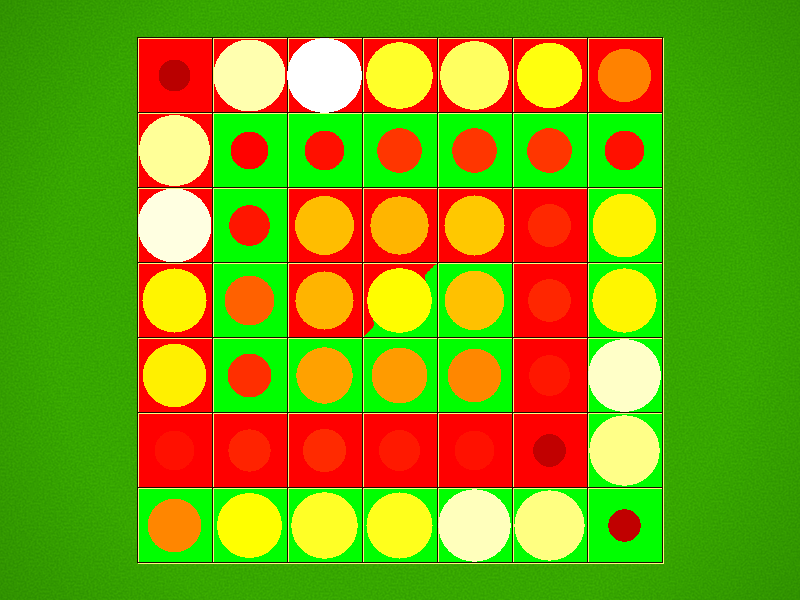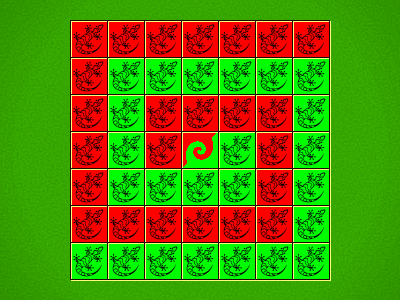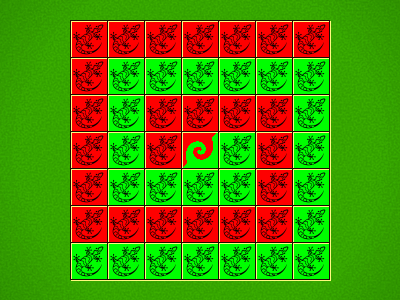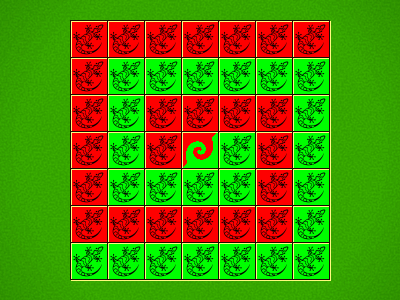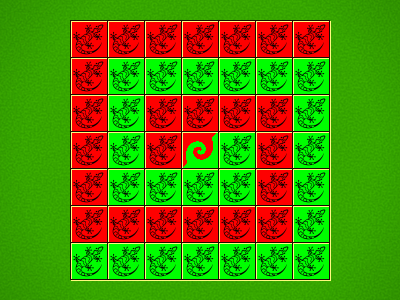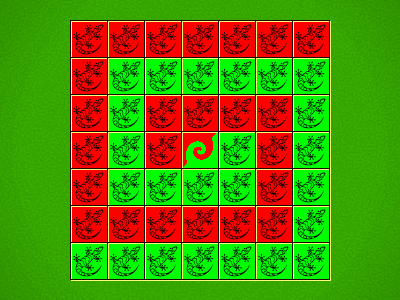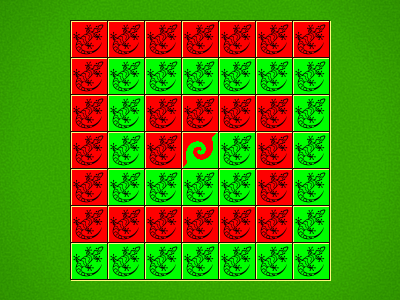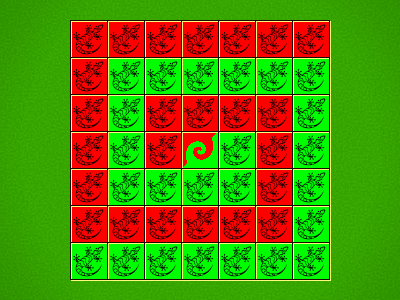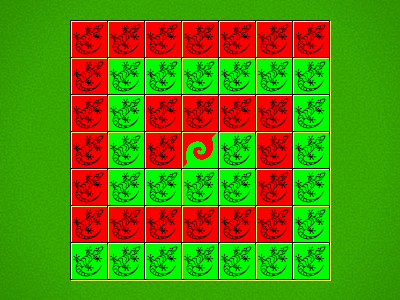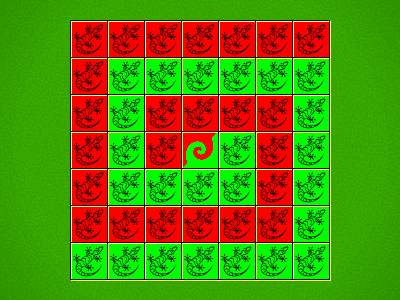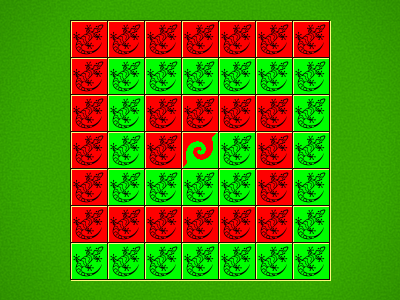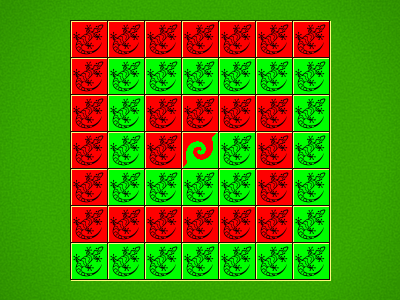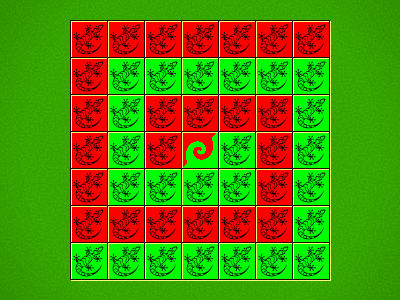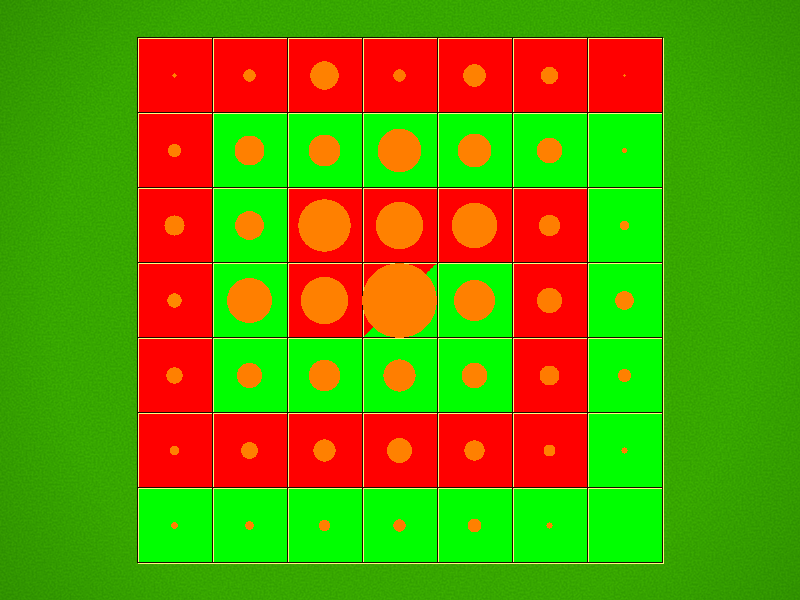Rules
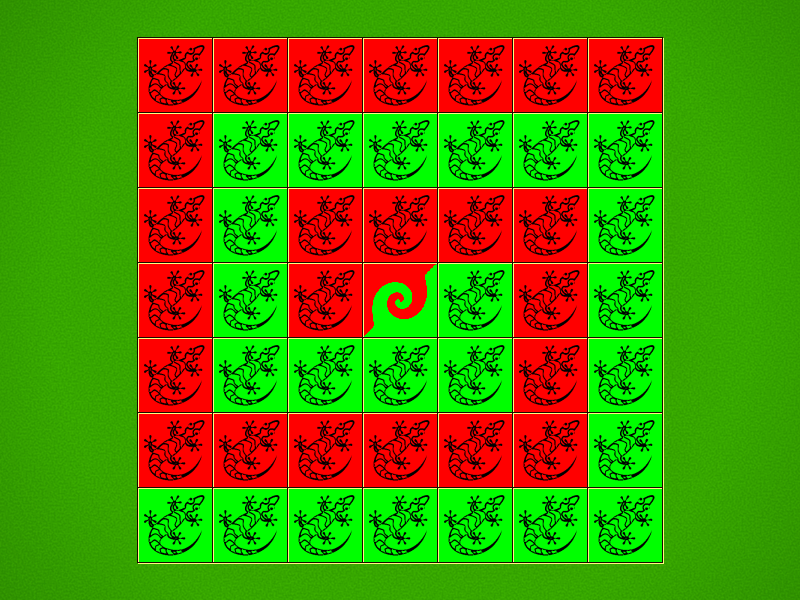
Representative game (in the sense of being of mean length). Wherever you see the 'representative game' referred to in later sections, this is it!
Play
Chameleons can move in all eight directions. There are two types of movement: a step and a jump.
- Step
- moving to an adjacent empty space.
- Jump
- A piece can jump over an opponent's piece and remove it from the game, if that opposing piece is adjacent and the space beyond it is empty, as in Checkers. And just like Checkers, jumps are mandatory and multiple jumps are possible. If having a choice of possible jumps, a player need not pick the one with the most captures.
Color Change
If a player ends his turn with one of his Chameleons on a space of the opposing color, he has until the beginning of his next turn to move it to a space of his own color. If he does not, that piece changes color to match it's space and effectively switches sides.If a player moves that Chameleon from a space of the opposing color to another space of the opposing color, then it changes color when landing on that space. If a player starts a turn with a Chameleon on a space of an opposing color, but then uses another Chameleon to perform a series of jumps, the Chameleon on the opposing color will flip after the first jump, as the player has signaled that he won't be moving it.
The central, space is always considered the opposite color of the Chameleon that occupies it. Thus if a Chameleon is left on that space, after the original player has had a turn to move it, it will begin changing colors every turn. It will then match the color of the player whose turn it is.
Goal
The object to the game is to completely eliminate your opponent's Chameleons, either through capture or color change.

